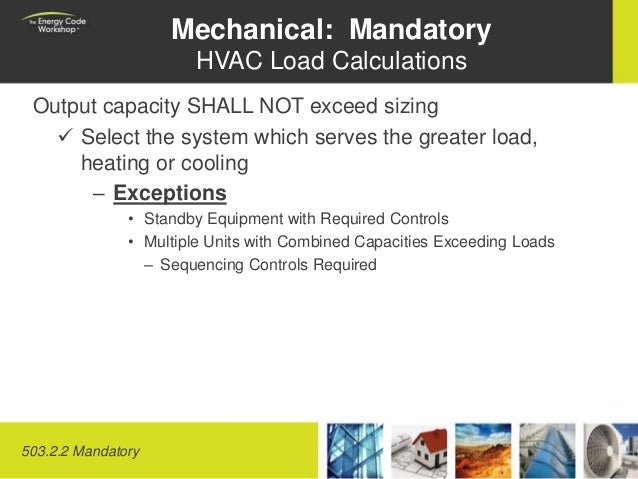Ashrae Cooling And Heating Load Calculation Manual Grp 158
Contents. CLTD/CLF/SCL cooling load calculation method The CLTD/CLF/SCL (cooling load temperature difference/cooling load factor/solar cooling load factor) calculation method was first introduced in the 1979 Cooling and Heating Load Manual (GRP-158) The CLTD/CLF/SCL Method is regarded as a reasonably accurate approximation of the total heat gains through a building envelope for the purposes of sizing equipment. This method was developed as a simpler calculation alternative to difficult and unwieldy calculation methods such as the transfer function method and the method.
Manual ashrae grp 158 crcf 1 heating and cooling load calculation ashrae cooling. Cooling and heating load calculation manual ashrae grp 158 2 assumptions & rules. Cooling load temperature difference calculation. In the 1979 ASHRAE Cooling and Heating Load Manual (GRP-158. ASHRAE Research Project 472.
Error when using the CLTD/CLF/SCL method tends to be less than twenty percent over and less than ten percent under. History After its introduction in the 1979 handbook, research continued on increasing the accuracy of the CLTD/CLF method. Research completed in 1984 revealed some factors which were not accounted for in the original publication of the method; these findings were a result of the research project 359. In 1988 Research Project 472 worked to correct these oversights with the introduction of a classification system for walls, roofs, and zones.
Additionally, a weighting factor database was generated to help correct for previous inaccuracies. Additional research in and appliance heat gain with respect to CLTD data was also completed shortly after the original publication of the method. The advancements in each of these areas inspired a revision/compilation effort, and in 1993 the CLTD/CLF/SCL method was succinctly compiled by Spitler, McQuiston, and Lindsey. Application The CLTD/CLF/SCL method uses predetermined set of data to expedite and simplify the process of cooling/heating load approximation.
The data is divided into many different sections based on many different variables. These variables include, building material of the envelope, thicknesses of the building materials, day of the year, time of day, orientation of the surface (e.g. Wall or roof, 90 degrees or 180), and wall face orientation (cardinal directions, i.e. N, NW, S, SE, etc.), to name a few. In order to determine which set of CLTD/CLF/SCL data to look at, all the requisite variables must be defined. The respective tables of data were generally developed by using the more complex to determine the various cooling loads for different types of heating.
The results gained by doing so are then normalized for each type of heat gain used for the tables, CLTD, CLF, and SCL. Explanation of variables The first of the cooling load factors used in this method is the CLTD, or the Cooling Load Temperature Difference. This factor is used to represent the temperature difference between indoor and outdoor air with the inclusion of the heating effects of.
The second factor is the CLF, or the cooling load factor. This coefficient accounts for the time lag between the outdoor and indoor temperature peaks. Depending on the properties of the building envelope, a delay is present when observing the amount of heat being transferred inside from the outdoors. The CLF is the cooling load at a given time compared to the heat gain from earlier in the day. The SC, or, is used widely in the evaluation of heat gain through glass and windows. Finally, the SCL, or solar cooling load factor, accounts for the variables associated with solar heat load. These include the global coordinates of the site and the size of the structure.
Ashrae Cooling And Heating Load Calculation Manual
Equations The equations for the use of the data retrieved from these tables are very simple. ^ Spitler, J.D., F.C. McQuiston, K.

The CLTD/SCL/CLF Cooling Load Calculation Method, ASHRAE Transactions. 99(1): 183–192. ^ McQuiston, F.C., and J.D. Cooling and heating load calculation manual. Atlanta: ASHRAE. Matalas, Gintas P.
Cooling And Heating Load Calculation Principles
Transfer Function Method of Calculating Cooling Loads, Heat Extraction And Space Temperature, ASHRAE Journal. Lindsey, K. Revision of the CLTD/CLF Cooling Load Calculation Method. Fsx - e-jets embraer virtual[torrents.ru]. Thesis, Oklahoma State University.
^ McQuiston, Faye C., Parker, Jerald D., Spitler, Jeffrey D. Heating, Ventilation, and Air Conditioning: Analysis and Design, p216-278. 2005, John Wiley and Sons, Inc.
ASHRAE Membership ASHRAE membership is open to any person associated with heating, ventilation, air conditioning or refrigeration. ASHRAE is unique because its membership is drawn from a wide range of disciplines relating to the HVAC&R field. Over 56,000 individuals from more than 100 nations belong to the Society. Discounts on Publications ASHRAE members earn 15% off publications. Hundreds of titles are available including the complete collection of ASHRAE Standards including 90.1, 62.1 and 189.1.
The Complete Applications-Oriented Resource for Load Calculations This second edition of Load Calculation Applications Manual, available in both I-P and SI units, is an in-depth, applications-oriented reference that provides clear understanding of the state of the art in heating and cooling load calculation methods, plus the tool and resources needed to implement them in practice. $119 ($97 ASHRAE Member) / 360 pages / 2014 Updates for this edition reflect in information from the 2013 ASHRAE Handbook—Fundamentals, including lighting, materials, and equipment used in buildings today, as well as new methods available since the first edition. This reference serves as a basic refresher course for those who use psychrometrics on a recurring basis and provides a four- to six-hour psychrometrics learning module to students; air-conditioning designers; agricultural, food process, and industrial process engineers; meteorologists and others. This text provides an understanding of fundamental HVAC concepts and how to extend these principles to the explanation of simple design tools used to create building systems that are efficient and provide comfortable and healthy environments.